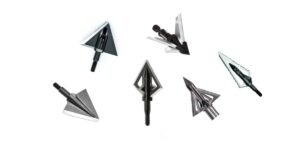In the sport of archery, you’ll often hear people talk about bows being forgiving or kind to beginners. It’s still up for debate exactly what the term ‘forgiving’ means when it comes to archery and some people are convinced that there’s no such thing.
Regardless of these debates, the common belief is that longer bows are generally more forgiving and tend to cancel out user error more than shorter bows.
However, there’s still a lot more to it than just that, so let’s take a look at all of the different factors that come into play when deciding how forgiving a bow might be.
Contents (Jump to Topic)
ToggleBrace Height
When you talk about long or short bows being forgiving, one of the most important things to consider is brace height.
Brace height is the distance between the deepest part of the grip and the string.
Longer Brace Height
Why is this important or relevant? Well, essentially, a longer brace height means that the arrow stays on the archer’s string for a shorter period of time, reducing the effects of any mistakes.
It leaves the string earlier so to say – and leaves less time for the archer to influence the shot.
Shorter Brace Height
A shorter brace height will be less forgiving because the time that the arrow spends on the string is longer.
Hence any movement or error made by the archer is more likely to affect the shot in a negative way.
Axle-To-Axle Length
Another measurement of length when it comes to bows is the axle-to-axle (ATA) length. As you might expect, this is the distance measured between each axle of a compound bow.
When it comes to the forgiving nature of a bow, ATA does also make a difference.
Longer ATA
34″ and up. Longer ATAs are popular in the target archery world. This is due to the fact that they are more stable, which in turn makes them more forgiving – they also tend to have a smoother draw cycle.
In general, a longer bow (ATA) will be more forgiving since each movement from the center makes less of an angle than a shorter one.
Mid ATA
32″ to 33″. The draw cycle of these bows is a bit more aggressive than the longer ones, but they are still pretty forgiving.
Short ATA
Shorter than 31″. If you´re hunting or shooting from confined spaces (ex. a ground blind or a treestand) those shorter ATAs are going to be your best bet. They are the least forgiving of the bunch, but they make up for it in maneuverability.
Are Longer Bows More Accurate?
The term ‘forgiving’ mainly refers to how easy a bow is for beginners to use but it’s also worth considering whether a longer or shorter bow might be more accurate for all archers.
Theoretically, everything we’ve learned about bow length so far would indicate that longer bows are more accurate.
After all, longer brace heights will minimize mistakes made by the archer, making their shots more consistent.
Similarly, a bow with a longer ATA measurement is much easier to balance, providing an equally consistent effect on an archer’s shots.
read.. are longer bows more accurate?
Again, though, there is some disagreement among archers about how much of an impact bow length actually has on accuracy. Some user research has found that there is a difference in accuracy between long and short bows, though only at certain distances.
What Else Makes A Bow Forgiving?
Everything we’ve looked at so far does have an impact on how forgiving a bow is but these aren’t the only factors that will come into play.
In general, anything that makes the bow more comfortable for you to use is something that makes it more forgiving for you.
Therefore, even something as simple as the grip on your bow could make it more or less forgiving. A grip that has been specifically designed for your hand will be more forgiving than a bow with a generic grip.
Similarly, a bow that dissipates energy and vibrations well will also make it more forgiving. When you start out in archery, it can be quite tricky to get used to the jarring vibrations that go through your hands when taking a shot.
Weight is another important factor to consider when thinking about what makes a bow forgiving. Much like ATA length, a heavier bow tends to be easier to find a good balance with.
This is because small movements in the archer’s hands will have less of an impact on the direction their shot will travel.
However, heavier bows can also be difficult for archers with less upper body strength for obvious reasons.
Ultimately, it once again all comes down to each archer’s personal preference.
Conclusion
In general, it is still widely acknowledged that longer bows are more forgiving for new archers. However, as we’ve seen, there are a number of other factors that can come into play when determining just how forgiving a bow actually is.
The best way to find out for sure is to try out bows of different lengths and see which one suits you best. As with anything in archery (and in life), practice makes perfect!








